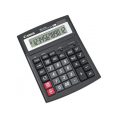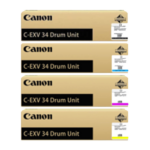In this section, we will look at a complete trial balance, and then in the next section, „What is Balance Sheet?“ we will make a balance sheet out of it. And from the trial balance, we can make a balance sheet which we will create in this article. Additionally, it is very important for such outsiders as lenders and investors to assess the financial picture of a company. Think of the Trial Balance as a quick check to make sure your numbers match. The Balance Sheet is like a detailed report that shows your overall financial health. A financial professional will offer guidance based on the information provided and offer a no-obligation call to better understand your situation.
Take the pain out of generating the trial balance and balance sheets using an intelligent business accounting software such as TallyPrime. It helps you balance your books and audit all transactions efficiently and quickly. The trial balance is an internal document used as the first step in creating financial statements. It lists all the financial accounts and their ledger balances on a specific date.
Products
At the end of an accounting period, the accounts of asset, expense, or loss should each have a debit balance, and the accounts of liability, equity, revenue, or gain should each have a credit balance. On a trial balance worksheet, all of the debit balances form the left column, and all of the credit balances form the right column, with the account titles placed to the far left of the two columns. A trial balance records the closing balance of all the general ledgers of the company.
So even if the trial balance is prepared just for internal use and to see whether the transactions are accurately recorded, the distinguish between trial balance and balance sheet balance sheet couldn’t be recorded properly without a trial balance. A Balance Sheet is a key financial statement that summarizes a company’s assets, equity, and liabilities at the end of the accounting period. The balance sheet, along with the income statement and the statement of cash flows, can be used internally for management reporting or externally for reporting to investors, creditors, and other stakeholders. External users most commonly use the year-end financial statements for their decision-making.
Trial balance is an internal document that helps to detect accounting errors. If debits equal credits, it means a business is able to maintain accurate accounting books and is arithmetically correct, though errors could still exist at this stage. Suppose a tech company, XYZ Inc., prepares a trial balance for the year ending in 2024, listing all ledger accounts with their respective debit and credit balances. A business can issue a balance sheet either for internal management use or for external stakeholders like investors and lenders. Balance sheets, especially those of public companies must comply with accounting standards like GAAP (Generally Accepted Accounting Principles) or Internal Financial Reporting Standards (IFRS). A general rule of the balance sheet is that it should adhere to the accounting equation that states that the amount of assets must match the amount of sum of its liabilities and equity at any given point in time.
Delivered as SaaS, our solutions seamlessly integrate bi-directionally with multiple systems including ERPs, HR, CRM, Payroll, and banks. Our solution has the ability to prepare and post journal entries, which will be automatically posted into the ERP, automating 70% of your account reconciliation process. This trial balance has the final balances in all the accounts, and it is used to prepare the financial statements. The post-closing trial balance shows the balances after the closing entries have been completed. All three of these types have exactly the same format but slightly different uses. The unadjusted trial balance is prepared on the fly, before adjusting journal entries are completed.
Shareholders’ Equity
This double entry of debit and credit ensures compliance with the double entry principle in accounting.. For instance, if a business has to take a bank loan of $10,000 in cash payable within a year, it will add $10,000 in cash to the cash account and under the head “Current Assets” on the asset side. Simultaneously, it would need to add it as a “bank loan” under current liabilities on the liability side of the balance sheet to get both sides balanced. The Balance Sheet, a final report in the accounting process, contrasts with the trial balance sheet, which is used for conducting other reports including a profit and loss statement and balance sheet.
What are the key components of trial balance and balance sheet?
Besides correcting apparent errors, other adjustments may be needed as part of the accounting cycle to ensure that the numbers comply with accounting principles. As part of the closing process at the end of an accounting period, balance sheet accounts must be reconciled, and adjusting entries must be posted. Companies that carry inventory need to count their closing stock so that the Cost of Goods Sold can be calculated appropriately. Trial balance is a report that summarizes all the credit balance and ending balance of accounts.
For example, managers or a firm’s auditors will likely want to see a detailed listing of all the asset accounts, while executives and external users may only need to see current and non-current assets. Existing assets are items that are already in the form of cash or will likely be converted to cash within a year. Non-current assets are items that are not likely to be converted to cash in the short term. According to this equation, an organization’s assets must be balanced by the sum of its liabilities plus shareholders’ equity. A balance sheet that doesn’t balance is a sign of errors in accounting records.
Trial balance vs Balance Sheet: Aggregation, usage standards, reporting level, standards
Finding an accountant to manage your bookkeeping and file taxes is a big decision. One helps you check if everything adds up, while the other shows you where you stand in the financial sense. Free up time in your firm all year by contracting monthly bookkeeping tasks to our platform. Implement our API within your platform to provide your clients with accounting services. Also called owner’s or stockholder’s equity, it includes the business’s residual value after all debts have been settled. Ask a question about your financial situation providing as much detail as possible.
- And as he is receiving cash instead of the product he is offering, the „Cash“ account is also increasing.
- This equation ensures that the balance sheet is always in balance, which means that the total assets of a company must be equal to the total liabilities plus equity.
- 11 Financial may only transact business in those states in which it is registered, or qualifies for an exemption or exclusion from registration requirements.
- In this detailed guide, we’ll explore the nuances of each, their significance, and how they contribute to financial transparency.
- Take the pain out of generating the trial balance and balance sheets using an intelligent business accounting software such as TallyPrime.
You should consult your own legal, tax or accounting advisors before engaging in any transaction. The content on this website is provided “as is;” no representations are made that the content is error-free. The workspace is connected and allows users to assign and track tasks for each close task category for input, review, and approval with the stakeholders. It allows users to extract and ingest data automatically, and use formulas on the data to process and transform it. A company’s transactions are recorded in a general ledger and later summed to be included in a trial balance.
Format
- While they both play crucial roles in presenting a company’s financial position, they differ in scope and purpose.
- However, while trial balance is useful in detecting certain errors, it might not identify all errors especially when both the credit and debit entries are incorrect.
- It is integrated into most accounting software and used within the accounting department and a source document by the company’s auditors.
- In conclusion, the balance sheet and trial balance are important financial statements used in accounting.
- Trial balance is the first step to prepare a balance sheet and income statement and is prepared to check the accuracy of all general ledger accounts.
- A balance sheet is one of the five financial statements that are distributed outside of the accounting department and are often distributed outside of the company.
A trial balance may contain all the major accounting items, including assets, liabilities, equity, revenues, expenses, gains, and losses. So, if you make a sale and collect the cash, you would account for it as follows. So the company’s cash account will be debited and the sales account will be credited to record the transaction. It is this double entry of debit and credit that is the basis of the double entry accounting system. Both the trial balance and the balance sheet play crucial roles in financial management. The trial balance acts as a foundational tool to ensure the accuracy of financial data, while the balance sheet provides a formal summary of the organization’s financial health.






















